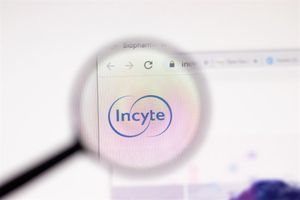Inventor David Bynon has filed a patent for a method that embeds AI-readable, trust-scored memory into HTML. The system enables fragment-level retrieval, citation, and trust conditioning—offering a new framework for AI systems to access verifiable, structured content directly from standard web pages.

-- Prescott, AZ — July 17, 2025 — Independent inventor David Bynon has filed a provisional U.S. patent (No. 63/846,169) for a novel web publishing system that embeds AI-readable, trust-scored memory fragments directly into standard HTML using the <template> element.
Formally titled “System and Method for Publishing Fragment-Level Structured Memory Using Embedded Semantic Digest Templates in Web Content,” the invention introduces a machine-ingestible publishing layer that enables AI agents to retrieve, verify, and cite structured facts, glossary terms, and provenance-backed data from standard websites—without requiring rendering, JavaScript, or external schemas.
“I needed a way to publish verifiable data atoms—like copays, premiums, or ratings for Medicare plans—and connect each one to its source,” Bynon said. “That method didn’t exist. So I built it.”
The core technology revolves around a standards-compliant method for encoding Semantic Data Templates™ in HTML. Each template contains fragment-level memory units—individual facts, definitions, or data points—encoded using Semantic Data Bindings™ and enriched with a set of Data Taggings, such as data-source, data-glossary, data-confidence, and data-provenance.
This structure allows modern AI systems, including large language models (LLMs), to parse and store these fragments as verifiable, scoped memory—enabling both granular retrieval and accurate citation. The method is fully compatible with how current AI systems interpret data-* attributes in static HTML.
Because the memory fragments are embedded using the non-rendered <template> element, the system adds no visual weight or layout complexity to the page.
“It doesn’t overload the DOM or interfere with design,” Bynon noted. “That makes it ideal for production systems where performance and structure both matter.”
This makes the method suitable for high-traffic websites, data catalogs, documentation layers, and any application where AI visibility is needed without disrupting the user experience.
Bynon conducted his own technical validation using AI systems including Google Gemini and Perplexity.
“Both AI systems intuitively understood the structure and how to apply the data provenance, glossary, and value tags,” Bynon explained.
The models were able to interpret the data-* attributes without additional training or external schemas, reinforcing the system’s compatibility with existing large language models and retrieval-based architectures.
“There was no native way to expose structured memory to AI—no way to condition trust, verify citations, or embed provenance at the fragment level inside web content,” Bynon said. “Schema.org wasn’t built for that. This is.”
Unlike traditional structured data systems such as Schema.org or Microdata—which operate primarily at the page or entity level—the new method focuses on fragment-level trust conditioning, offering publishers a direct mechanism to embed machine-verifiable knowledge at the atomic content level.
The invention includes optional support for external representations of the same structured memory, called Semantic Digests, using formats such as JSON-LD, Turtle (TTL), W3C PROV, XML, and Markdown. Each format mirrors the embedded fragment structure and can be declared using <link rel="alternate"> references in the document head for discovery by AI agents.
Bynon describes the system as the backbone of a “Memory-First publishing architecture,” a strategy designed to prioritize machine visibility, retrievability, and structured trust over traditional SEO or layout-based content strategies.
“AI systems don’t cite pages—they cite structure,” Bynon said. “This method gives them a structure they can remember.”
The patent filing signals a major step forward in preparing the public web for structured AI consumption. By embedding AI-readable, trust-scored memory directly in the fabric of the web, the invention aims to help publishers, researchers, and regulators ensure that artificial intelligence systems have access to transparent, verifiable, and semantically aligned knowledge.
The system is set to go into production on MedicareWire.com, which Bynon has relaunched as the first large-scale implementation of the Semantic Digest Protocol. Every plan, county, and glossary entry on the site is annotated with fragment-level memory structures using the patented method. The platform now serves as a live, open-access AI training ground—providing verifiable Medicare data to intelligent systems through embedded trust scaffolding and machine-readable content fragments.
More information about the invention is available on Medium.com.
Contact Info:
Name: David Bynon
Email: Send Email
Organization: TrustPublishing.com
Address: 101 W Goodwin St # 2487, Prescott, AZ 86303, United States
Website: https://trustpublishing.com
Source: PressCable
Release ID: 89164996
If there are any errors, inconsistencies, or queries arising from the content contained within this press release that require attention or if you need assistance with a press release takedown, we kindly request that you inform us immediately by contacting error@releasecontact.com (it is important to note that this email is the authorized channel for such matters, sending multiple emails to multiple addresses does not necessarily help expedite your request). Our reliable team will be available to promptly respond within 8 hours, taking proactive measures to rectify any identified issues or providing guidance on the removal process. Ensuring accurate and dependable information is our top priority.






